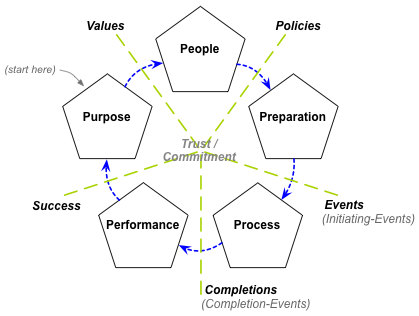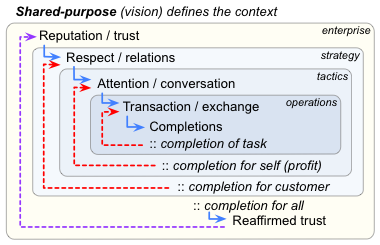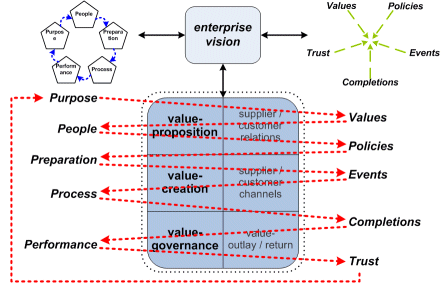Product, service and trust
Sirens blaring, blue lights flashing, the large white truck howls across the junction just ahead of us. Unusual markings, too: ‘Bomb Disposal’.
In these troubled times it could be anything, of course; but out here, in the quiet backwaters of eastern England, it’s most likely that it’s that workers on a building-site have come across yet another all-too-live product from the Second World War. Yet another incompleted service-delivery, we might say…
Almost seventy years after that war ended, those incidents are still all too common here. The same applies to the incompleted service-deliveries of every other modern war: there was a lethal example in Belgium the other day – a left-over from an even earlier European war – whilst abandoned landmines and cluster-bombs are an ever-present danger for children and others on battlefields and farmlands alike across all too many parts of the world.
Bombs and shells and mines are the products of war, or for war. Yet the point of any product – even this kind of product – is not the product itself: it’s the service that matters, the active delivery of the desired outcome.
And whatever we might think of modern weaponry, its purpose or promise as a product is that it will deliver on its service of damage and destruction at the required time. Yet the literally-painful fact now is that much of it failed to deliver on its promise at the required time: for example, some 30% of munitions from the First World War failed to explode, and the reliability-record in the Second World War wasn’t much better. And the reason why it’s a literally-painful fact is that much of that remainder is still capable of delivering on its designed-promise now. And does – even though it’s very much no longer ‘the required time’: that’s the problem… Hence the bomb-disposal truck, speeding on its way through the town, delivering on its service of preventing that service-delivery from happening…
All of which is perhaps a rather roundabout way of introducing a theme that I think of as fundamental to business-models, operational-models, business-architecture and enterprise-architecture: the relationships between product, service and trust.
In more general terms (and, we would hope, preferably non-lethal too), we could summarise the above as:
A product represents the promise of future delivery of (self)-service, via use of that product
Hence, for example, if we buy a lawnmower, what we’re actually buying it for is the future service-delivery of a mown lawn – the service itself delivered, via that product, by us, by some other family-member, by some neighbourhood teenager or whoever. Alternatively, we could buy just the service of the delivery of a mown lawns, from a lawn-mowing service: in principle, there’s no difference. In practice, of course, there usually is a relevant difference – such as that there’s no lawn-mowing service available, or we regard doing it ourselves as cheaper or more satisfying or convenient, or we just like the status-feeling of ‘owning’ the lawnmower or suchlike. Or, in other words, a difference of perceived-effectiveness of service-delivery.
Importantly, though:
When we obtain a product, we trust that that product will deliver on its promise of service-delivery at the required time
For example, an insurance-product is a promise of future support or recompense if some kind of ‘insurable loss’ were to eventuate. But the key point there is the promise, and trust in the identifiable future delivery upon that promise: because if the promised service isn’t delivered – such as when the insurance-provider tries to back out of their promise, or to ‘adjust’ the nominal loss in their favour – then that purported promise feels more like a betrayal, a lie. And nothing destroys trust quicker than perceived-betrayal. It’s also the fastest way that an organisation can create anticlients against itself: not wise…
Trust is at the centre of everything in any enterprise – every product, every service. Without trust – or at least in proxy form, as reputation – nothing is going to start; and when it’s lost, everything stops.
It takes a lot of work to build trust – yet often only seconds, or less, to lose it. And once lost, regaining trust is often harder – sometimes much harder – than building it from scratch.
Hence, unsurprisingly, organisations really do need to monitor trust, in every aspect of their operations and beyond, inside, outside, above, below and all round. Which is a lot trickier than it might at first seem, because ‘information about trust’ – such as we might hold in an IT-system, or display on an ‘executive-dashboard’ – is not the same as as trust itself: yet it’s the latter – not the former – that we most need to track.
So, for example, in what ways do each and every one of our activities and services reinforce trust, or place trust at risk? At a first level, we could map this in terms of the Five Elements sequence-like set that underpins much of my own work on enterprise-architectures:
And we could map the overall flow of trust, and support of and reaffirmation of trust, within the service-delivery cycles of each service, using a model such as the Service Cycle:
From there, we can map that pair of interaction-sets across the flows and sub-tasks of service-delivery, from ‘inside’ to ‘outside’ and back again, again supporting and reaffirming trust:
For enterprise-architects and business-architects, tracking these threads and themes and interactions should be a key part of enterprise-modelling and business-modelling. It worries me a lot that I don’t see many EA-folks doing so as yet…
Another related theme is waste:
Waste is a product whose services are no longer required and/or are no longer trusted
And/or:
Waste occurs when the inherent promise of products or future services is lost
Both of those should be self-evident when we look at ‘waste’ in terms of ‘lean manufacturing‘ and suchlike. Yet think of that latter example also in a human sense: the waste and loss of hope implied when a life is damaged or cut short before its time… When such promise is lost, there’s also that sense of betrayal, of loss of trust – even trust in life itself.
Some of the implications of this can go very deep indeed – yet the core of it comes right back to these three themes:
- product as a promise of future service
- trust in those promises as a foundation for enterprise – especially ‘enterprise as service’
- waste as the loss of the promise or loss of trust
How would you map these in your enterprise, and for your products and services?
Nothing more that I’d add to that for now: it’s just a thread that’s been weaving around for me over the past few days. Over to you for comment, perhaps?



Interesting…in essence, a product features in two services: “the promise of future delivery of (self)-service, via use of that product” and the service around the provision of the product to the customer, both of which will depend on trust.
Good point – yes, you’re right, there’s an interesting recursion here, where products support services to create products to support services to… (ad infinitum, possibly). And trust holding the whole deep-recursion together – or the loss of trust potentially causing the whole thing to fail, at any point and level within that recursion.